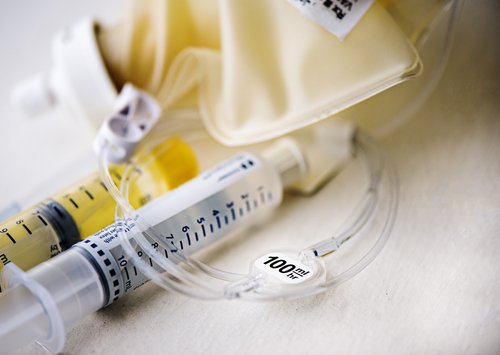This post was originally published on this site
For people with multiple myeloma who don’t respond well to an initial type of therapy, quickly switching to another type may improve clinical outcomes, a new study suggests.
The study, “Response-adapted intensification with cyclophosphamide, bortezomib, and dexamethasone versus no intensification in patients with newly diagnosed multiple myeloma (Myeloma XI): a multicentre, open-label, randomised, phase 3 trial,” was published in The Lancet Haematology.
Multiple myeloma is a heterogeneous disease — that is, within a given person, different cancer cells could have different traits, and these differences can make some cells more or less sensitive to certain kinds of cancer-killing therapies. This is a major concern because it suggests that, even if a given therapy kills most cancer cells in a person, it may not be effective against all of these cells — and those cells that remain can continue to grow, eventually leading to relapse and disease progression.
One idea to combat this is using therapies with different mechanisms of action, in combination or in sequence, relatively early on in treatment, particularly when responses to an initial therapy are less than optimal. Researchers tested this idea using data from the Myeloma XI Phase 3 clinical trial (ISRCTN49407852).
The study focused on 583 patients (57% male, average age 66 ) with newly diagnosed multiple myeloma who had suboptimal (a partial or minimal) response to an induction therapy (a first line of chemotherapy), which included cyclophosphamide, dexamethasone, and either thalidomide or Revlimid (lenalidomide).
These people were randomly assigned to one of two groups: a no further treatment group (294 people) and an ‘intensification therapy’ group given of three-to-five additional rounds of chemotherapy. This time, the combination used was cyclophosphamide, dexamethasone, and Velcade (bortezomib).
Velcade works by interfering with cancer cells’ ability to properly make proteins, which is a different mechanism of action than any of the other agents.
Participants were followed for a median of 29.7 months, with primary trial goals (endpoints) being progression-free survival time (PFS; the length of time without evidence of disease progression or death), and overall survival rates.
In the group given the intensification treatment, the median PFS was 30 months; for those who were not, PFS was 20 months — meaning that intensification treatment cut by 40% the risk of disease worsening or death. This benefit was seen irrespective of age, sex, type of induction therapy, and genetic risk score.
Likewise, the treatment brought benefits to both transplant-eligible (48 months vs. 28 months) and ineligible patients (20 months vs. 9 months).
This suggests that, indeed, switching between therapies that work in different ways may be beneficial.
“From a biological perspective,” the researchers wrote, “our results are consistent with the concept that resistance to initial therapy is based on the specific therapy used. This resistance can be overcome by switching to a chemotherapy regimen with an alternate mechanism of action.
“We found that the adverse prognostic effect of poor initial response can be overcome and is not an inherent feature of the cancer itself but rather of the therapy administered.”
Overall survival rates at three years were not significantly different between the two groups (77.3% vs. 78.5%).
“However,” the researchers noted, “median overall survival was not reached in either group at the time of analysis and after additional follow-up this endpoint will be reanalysed.”
The most commonly reported adverse events in the intensification treatment included decreased numbers of immune cells, constipation, and diarrhea. Most were mild to moderate. There were 71 serious adverse events in the intensification treatment group; more than half of these (42) were infections. Thirty-four (12%) patients stopped intensification treatment at least partly due to its side effects.
“Taken together our data suggest that, in the case of suboptimal response to initial treatment, agent class should be switched rapidly with the aim of response intensification,” the researchers concluded.
The post Switching Chemo Types in Initial Combo May Help Myeloma Patients with Poor Response, Study Says appeared first on Myeloma Research News.
The post Switching Chemo Types in Initial Combo May Help Myeloma Patients with Poor Response, Study Says appeared first on BioNewsFeeds.


